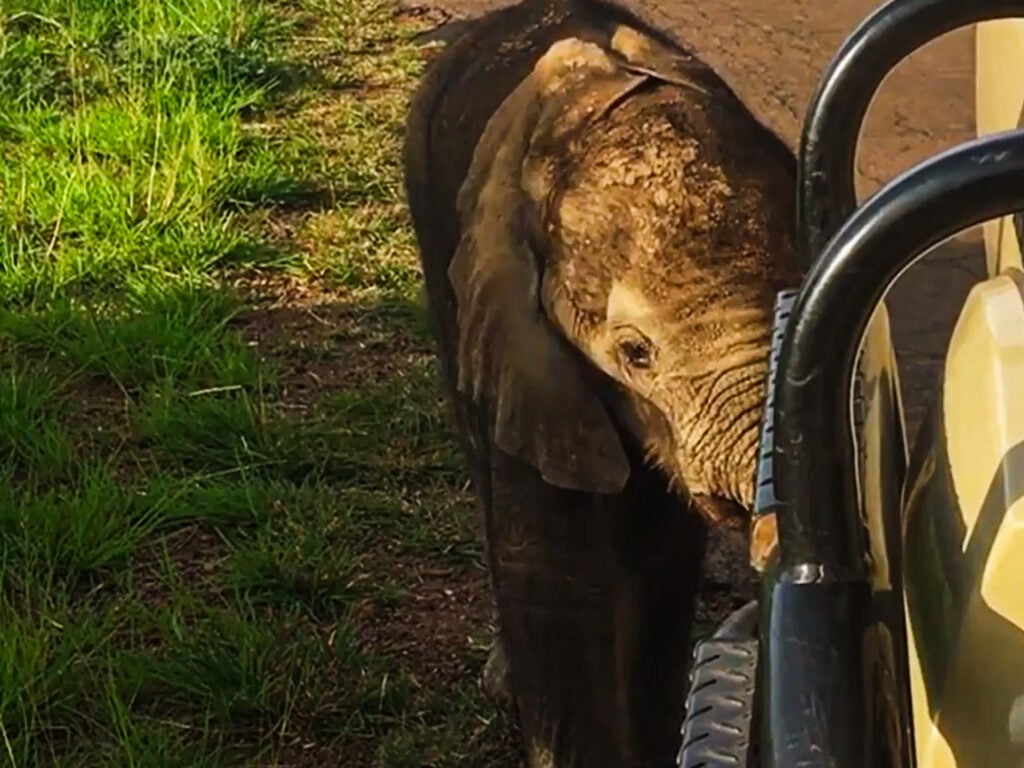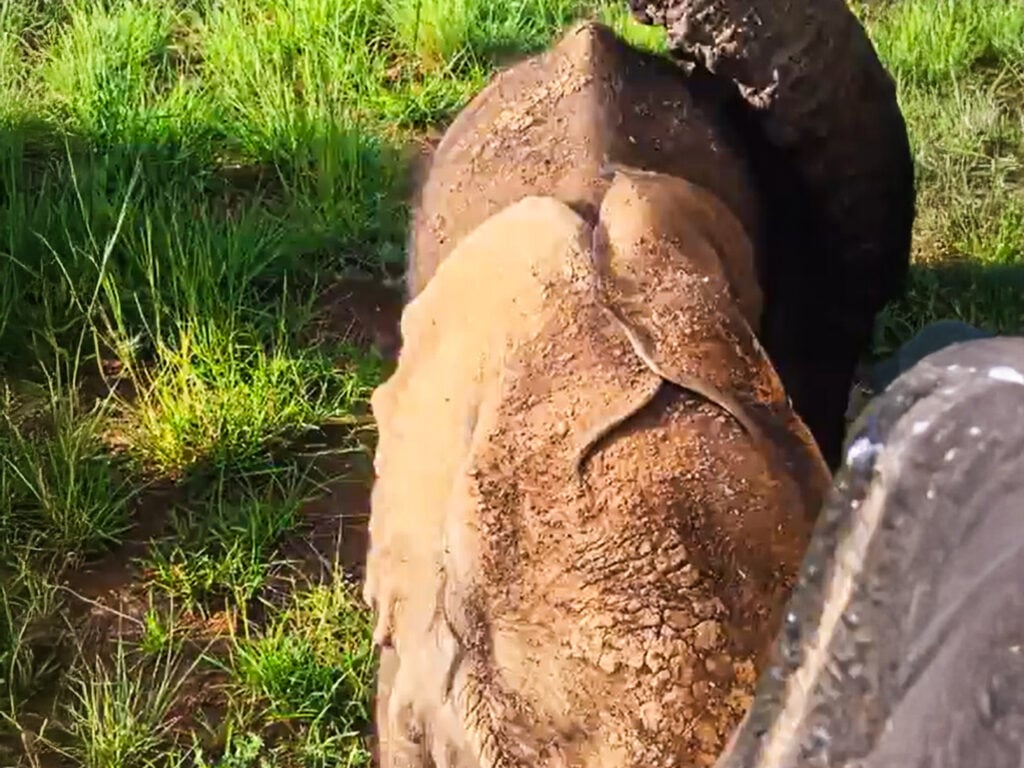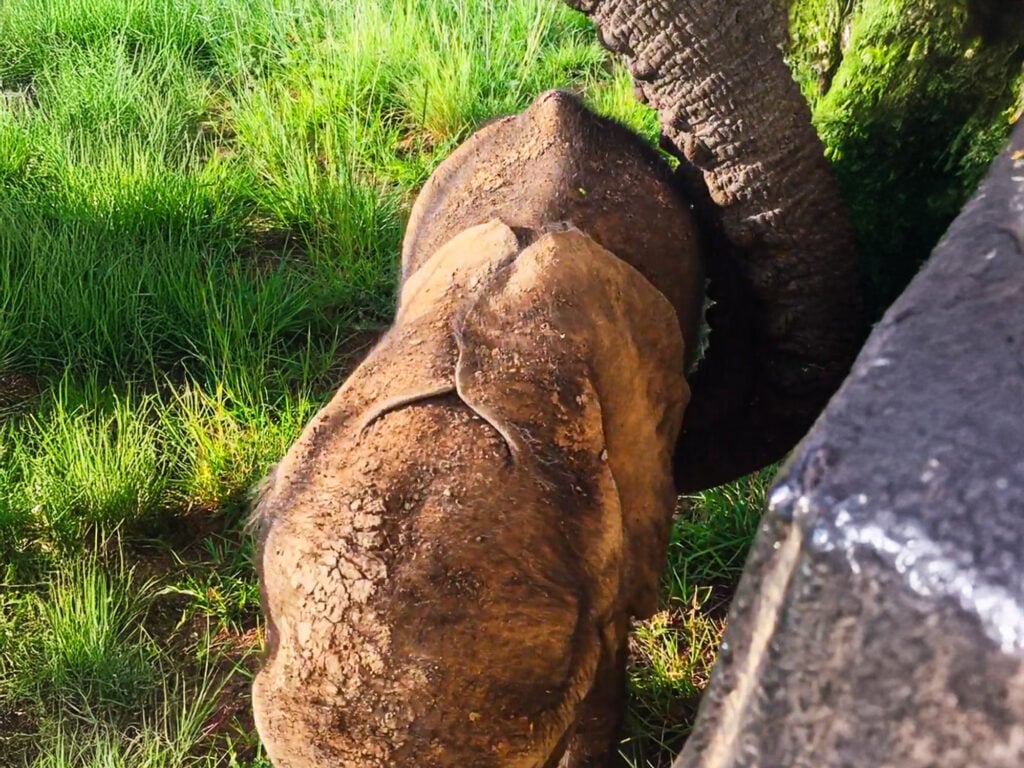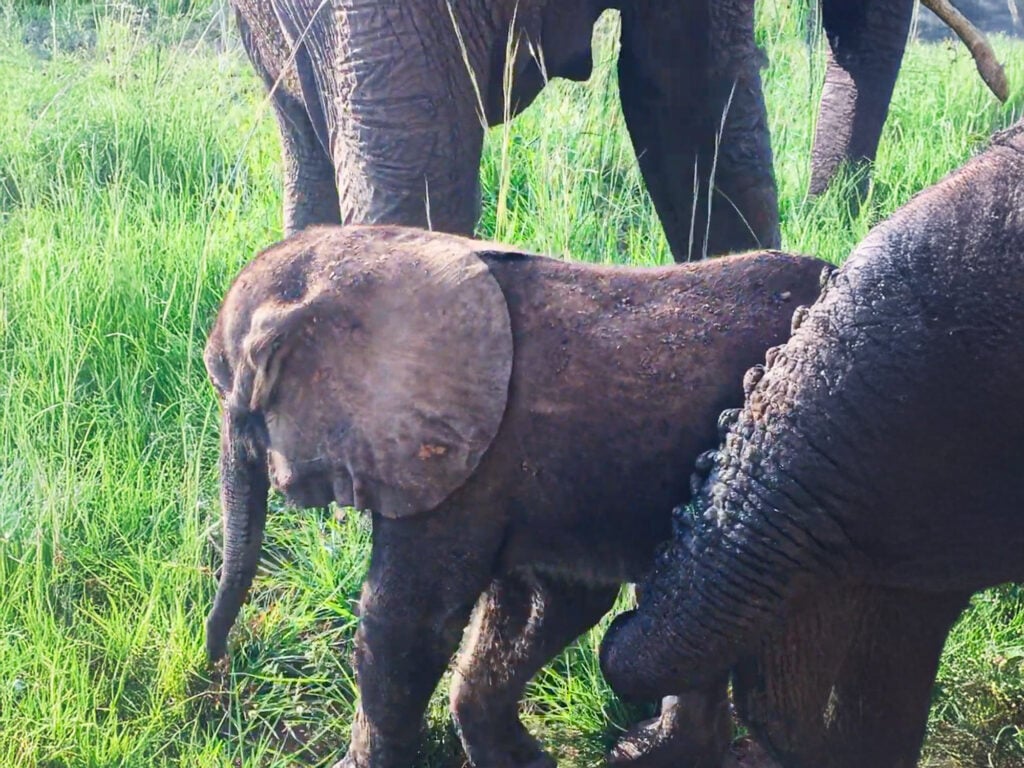
Tarryn Rae sent this sweet video to Latest Sightings. She enjoyed the intimate experience in Pilanesberg National Park, South Africa.
Curious calf
Like all young animals, baby elephants have a lot to learn in preparation for a long life ahead. So, when this calf encountered Tarryn’s safari vehicle, it approached for a closer look.

As Tarryn asks her passengers to remain quiet and still, the innocent little elephant inspects the rear of the vehicle. The reason Tarryn does so is that she doesn’t want to startle the calf or its mother standing nearby.
While the elephants in Pilanesberg are wild and free-roaming, exposure to vehicles has made them habituated to their presence.
Features of an elephant calf
As we watch, we notice a couple of physical characteristics typical of baby elephants. Firstly, much of the body is covered in coarse hair. As the calf ages, its body hair will become more sparse but never disappear.

You’ll also note that it lacks significant dexterity in the use of its trunk. It takes a young elephant about two years to master control of this complex, highly-muscled appendage.
Also, it looks like the calf is either in the process of losing its ‘milk tusks’ or its permanent tusks are beginning to emerge. The calf is likely between one and two years old.
Skincare for elephants
As the calf gets closer to the camera, we can see that there is a layer of dried mud visible on its head. Elephants love mud-bathing.

This, in combination with dust-bathing, protects the elephant’s skin from parasites, keeps them cool and protects their skin from the sun.
Patient yet protective
After calmly allowing her calf to inspect the vehicle, she approaches to move the calf along. With all the tenderness we associate with motherhood, she gently wraps her trunk around it and draws it closer.

Obediently, the calf walks to her side as the herd prepares to move on…

One more look
However, just like a child who has to do “one more important thing”, no sooner has its mother walked on, than it turns back to the vehicle.

Subsequently, the mother turns and once again gently encourages her curious calf to follow the herd.
It is noteworthy that throughout the encounter, the elephants remain relaxed thanks to Tarryn’s sensitive management of her guests.
Get our Best Sightings as they Come in
On to new adventures
As the mother and calf move on after the herd, we can only wonder what the calf is thinking. For a young animal, its environment must be a place of wonder, stimulating its early development.

For those of us fortunate enough to see elephants in the wild, this is an excellent reminder about the importance of being sensitive to the needs of the animals.
This considerate behaviour has the added benefit of allowing us to view the animals behaving naturally, even in close proximity to us.
Without question, animals adjust their behaviour according to the amount of stress, or lack thereof, that they experience.
As such, it is beneficial to both wildlife and people when we abide by the rules and regulations in place in our national parks and conservation areas. Rather than restrict us, they are there to ensure our mutual safety and foster an authentic wildlife experience.
